Most people think a smart TV is just a bigger, fancier screen. But if you’ve ever used voice commands to turn it on, streamed Netflix from your phone, or had your TV turn on when you walk into the room, you’re already using it as part of your smart home. So is a smart TV really a smart home device? The answer isn’t yes or no-it’s more like, smart TV depends on how you use it.
What Makes a Device "Smart Home"?
A smart home device isn’t just something with Wi-Fi. It’s something that connects to a larger system, responds to commands from other devices, and automates tasks without you lifting a finger. Think of your thermostat adjusting when you leave the house, your lights turning on at sunset, or your door unlocking when your phone gets close.
Smart TVs have all the hardware needed to fit this definition: Wi-Fi, Bluetooth, voice assistants like Alexa or Google Assistant, app support, and remote control via smartphone. But having the tools doesn’t mean it’s automatically part of your smart home. You have to connect it.
How Smart TVs Connect to Your Smart Home
Modern smart TVs from Samsung, LG, Sony, and TCL all run on platforms like Tizen, webOS, or Google TV. These aren’t just for streaming-they’re gateways to your home network.
Here’s how they actually integrate:
- Voice control: Say "Hey Google, turn on the TV" and your TV wakes up-even if it’s off. That’s not just convenience. That’s automation.
- Home automation hubs: Samsung SmartThings and LG ThinQ let you control your TV alongside your lights, locks, and sensors from one app. If your motion sensor detects movement at night, your TV can automatically switch to a dimmed ambient mode.
- Universal remote functions: Your TV remote can control your soundbar, cable box, and game console. That’s not just a remote-it’s a command center.
- App-to-app triggers: If your smart thermostat detects you’re home, your TV can auto-launch your favorite streaming app. If your doorbell rings, your TV can show the live feed.
These aren’t gimmicks. These are real automations built into the OS of most new TVs. And they’re used daily by millions.
What Smart TVs Can’t Do (Yet)
Not every smart TV is equally smart. Some cheaper models only support basic streaming and have no voice assistant. Others can’t be controlled via third-party apps like Home Assistant. If your TV doesn’t support Matter, Zigbee, or Z-Wave, it’s not a full smart home participant-it’s just a connected device.
Here’s what most smart TVs still lack:
- Local processing: Most TV voice commands still send audio to the cloud. That means slower response and privacy concerns.
- Direct sensor input: Your TV can’t detect temperature, motion, or air quality. It can only react to signals from other devices.
- Independent automation: A TV won’t turn itself on because it’s 7 p.m. unless you set it up through a hub or app.
So while a smart TV can be part of your smart home, it’s not a standalone brain. It’s more like a speaker or display-useful, but only as smart as the system it’s plugged into.
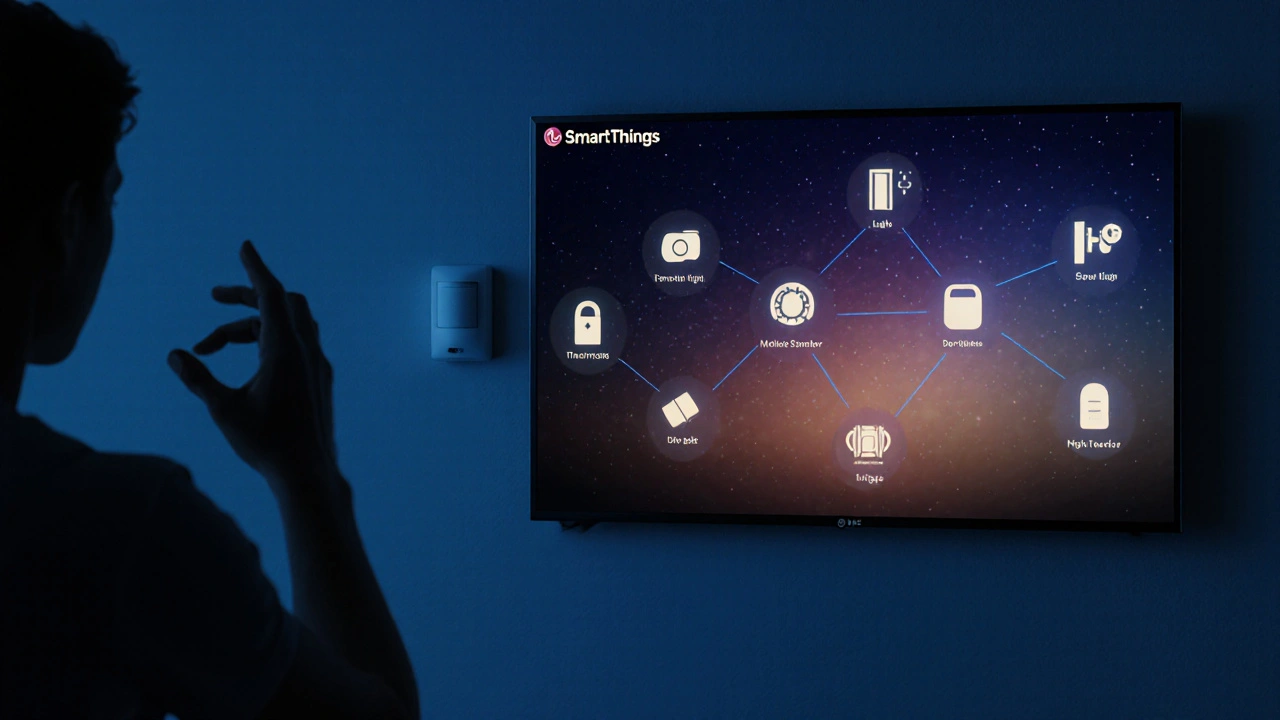
Real-Life Example: A Morning Routine
Here’s how a smart TV functions as a true smart home device in practice:
At 6:45 a.m., your smart thermostat senses you’re awake and turns on the bedroom heater. Your smart lights slowly brighten. Your coffee maker starts brewing. And your TV-set to wake up with your routine-powers on to show the weather and news headlines.
None of that happens unless your TV is linked to your home automation hub. If you bought a TV last year and never connected it to Google Home or Apple HomeKit, it’s just a TV. But if you did? It’s now a core part of your morning ritual.
Do You Need a Smart TV for a Smart Home?
No. You can have a fully automated home with no TV at all. Smart lights, thermostats, locks, and security cameras don’t need a screen. But if you already own a smart TV, not using it as a smart home device is like buying a smartphone and only using it to make calls.
Think of your TV as your home’s entertainment command center. It’s where you watch the security feed, control your lights with voice, or get weather alerts while you eat breakfast. It’s not just a display-it’s a control panel.
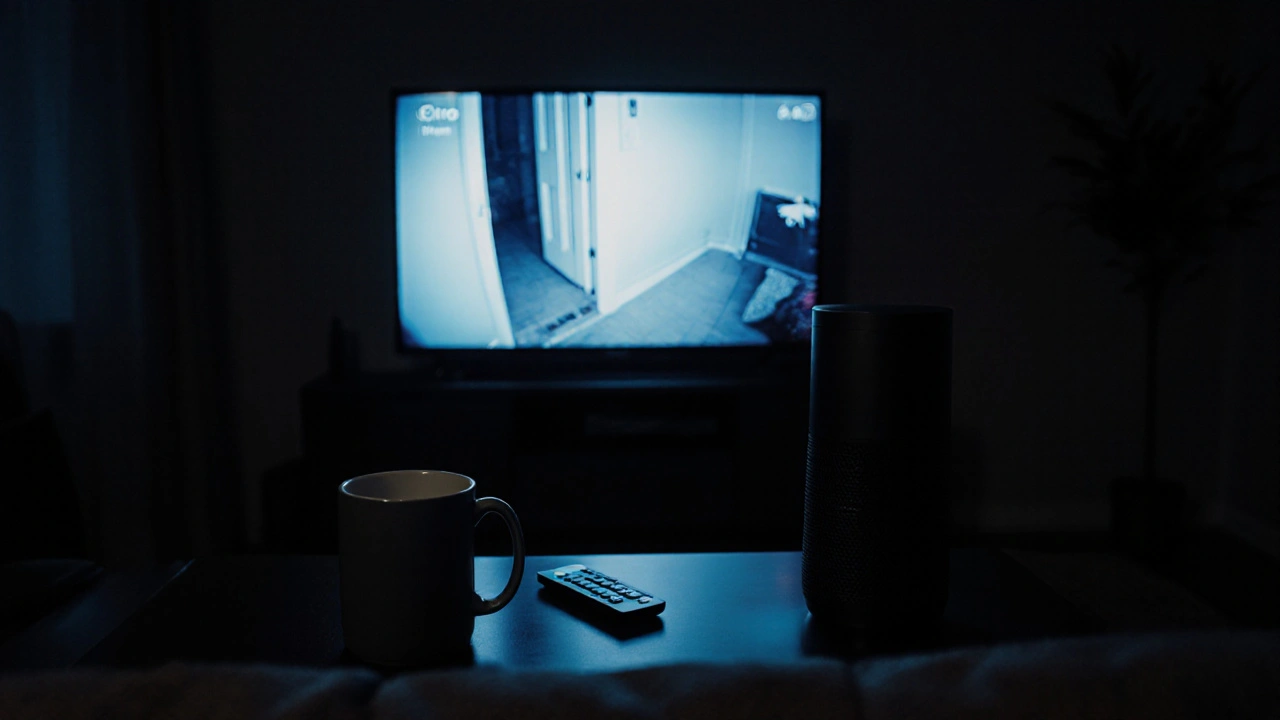
Should You Upgrade Just for Smart Home Features?
If your current TV works fine and doesn’t support voice assistants or app integration, upgrading just to make it "smart" isn’t worth it. But if you’re replacing your TV anyway, pick one with:
- Google Assistant or Amazon Alexa built-in
- Support for Apple HomeKit or Samsung SmartThings
- Matter certification (for future-proofing)
- App support for Home Assistant or IFTTT
Models like the LG C3, Samsung QN90C, or Sony X90K all meet these standards. They’re not expensive extras-they’re standard now.
Privacy and Security Risks
With great integration comes great responsibility. Smart TVs have cameras and microphones. Some manufacturers collect viewing habits. Others send data to third parties for ads.
Always:
- Turn off "personalized ads" in TV settings
- Disable voice recording if you don’t use it
- Use a separate Wi-Fi network for smart devices
- Update firmware regularly
Most risks are avoidable. But ignoring them turns your TV from a helper into a spy.
The Bottom Line
A smart TV isn’t automatically a smart home device. But it can be-one of the most useful ones you own. It’s not about the TV itself. It’s about how you connect it. If you use it to control lights, respond to voice, or trigger routines, then yes-it’s smart home. If you just use it to watch shows? Then it’s just a TV.
Smart home tech isn’t about having the most gadgets. It’s about making your life easier. And if your TV helps you do that-without you even thinking about it-then it’s earned its place in your smart home.
Can I use my smart TV as a smart home hub?
Most smart TVs can’t act as full hubs like a Google Nest Hub or Amazon Echo Show. They can control devices, but they don’t store settings or manage connections between different brands. For true hub functionality, you need a dedicated device like a SmartThings Hub or HomePod.
Do all smart TVs have voice assistants?
No. Budget models from lesser-known brands often skip voice assistants entirely. Always check the specs before buying. Look for "Alexa built-in," "Google Assistant," or "Bixby" in the product description. If it’s not listed, assume it doesn’t have it.
Can I control my TV without a remote?
Yes. Most smart TVs can be controlled through smartphone apps like Samsung SmartThings, LG ThinQ, or the Google Home app. You can also use voice commands or even gesture controls on some models. The remote is optional.
Is a smart TV more secure than other smart home devices?
No. TVs are often less secure because manufacturers prioritize features over updates. Many TVs get firmware updates for only 2-3 years. Always enable automatic updates, use strong passwords, and avoid connecting your TV to your main Wi-Fi network if possible.
What’s the difference between a smart TV and a streaming stick?
A smart TV has the operating system built into the screen. A streaming stick like Roku or Fire TV adds smart features to a regular TV. Both can connect to smart home systems, but smart TVs usually offer better integration because they’re designed as part of the whole device-not an add-on.
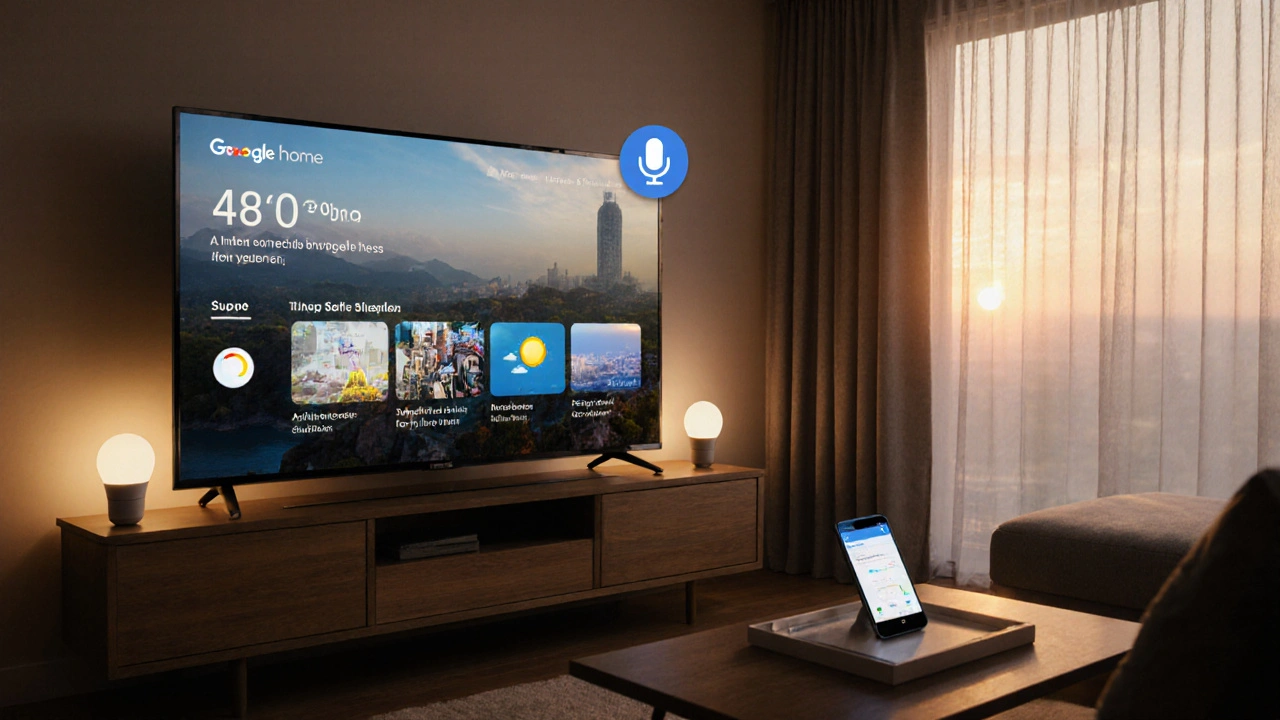

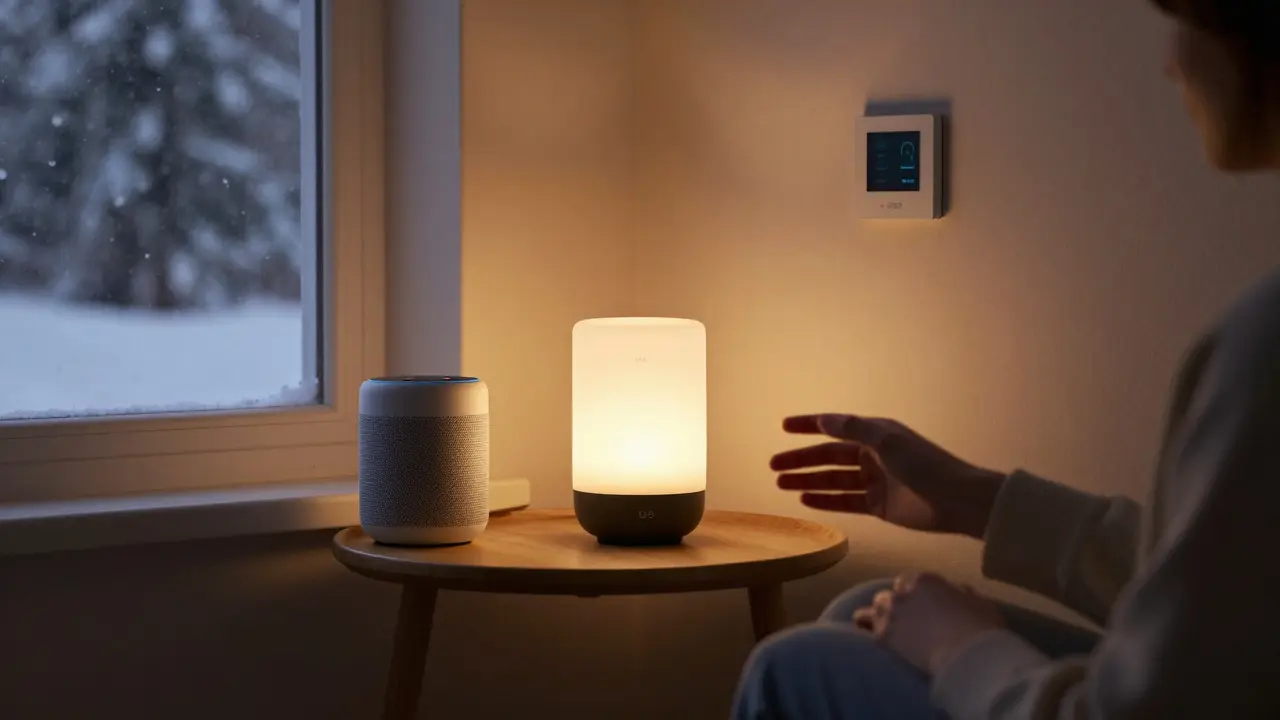
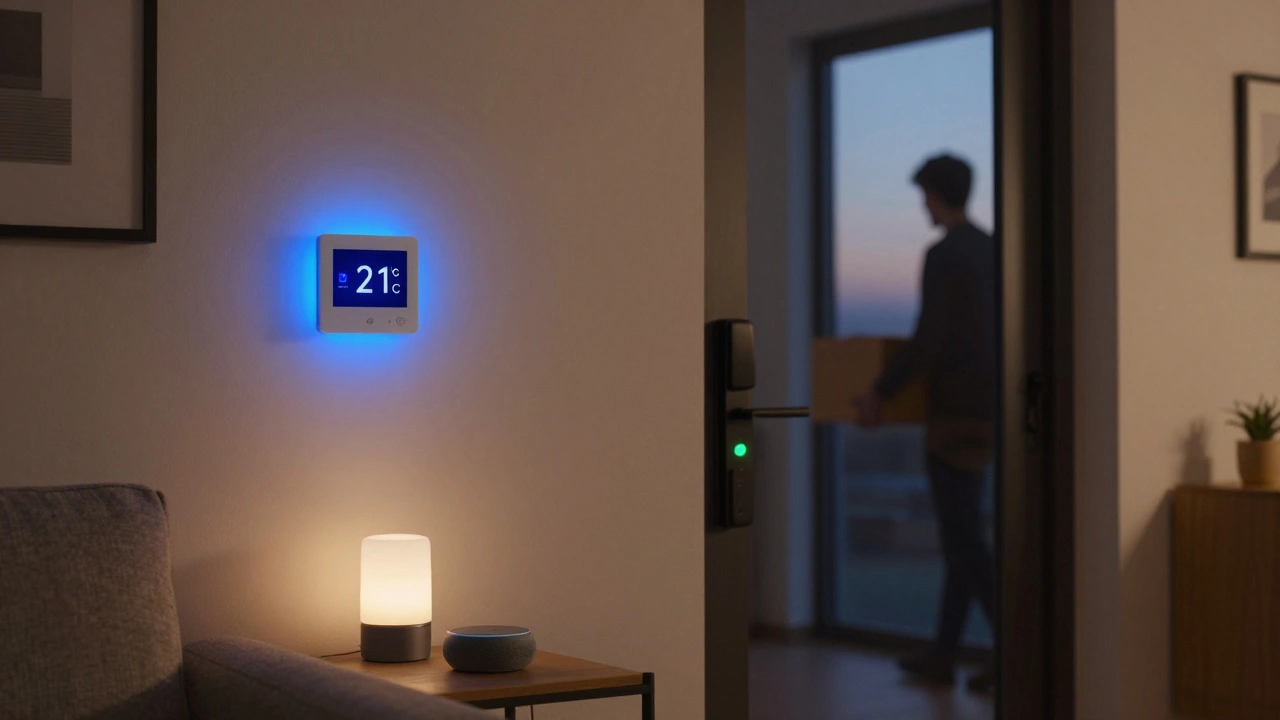
Nick Rios
November 17, 2025 AT 03:41Most people treat their TV like a dumb appliance even when it’s doing half the work of a smart home hub. I’ve had mine linked to SmartThings for two years now - lights dim when I start a movie, the thermostat adjusts, and my door locks automatically if I forget. It’s not magic, it’s just setup. Why do so many people buy the hardware and never use the features?
Amanda Harkins
November 17, 2025 AT 20:38It’s not about whether it’s smart - it’s about whether you’re willing to let it be. The TV doesn’t care if you use it as a glorified remote. But if you do? It becomes this quiet, invisible part of your life. Like a good friend who shows up when you need them, but never demands attention.
Mike Zhong
November 19, 2025 AT 14:17Stop romanticizing this. Your TV isn’t a ‘smart home device’ - it’s a marketing lie wrapped in Wi-Fi. It’s a glorified streaming box with a camera and mic that phones home to Samsung’s data farm. If you think it’s ‘part of your routine,’ you’re justifying surveillance with convenience. Wake up.
Jamie Roman
November 20, 2025 AT 04:23I get what you’re saying about the TV being a control center, but let’s be real - most people don’t set up automations because they’re intimidating. I didn’t until last year, when I finally figured out IFTTT. Now my TV turns on with the coffee, plays my morning podcast, and dims the lights if it’s raining. It’s not about tech - it’s about patience. You don’t need to be a hacker, just persistent. And maybe watch a 10-minute YouTube tutorial. No shame in that.
Salomi Cummingham
November 20, 2025 AT 12:01I used to think smart TVs were overpriced gimmicks - until I had my first panic attack at 3 a.m. because I couldn’t find my remote. Then I screamed ‘Hey Google, turn off the TV’ and it did. And I cried. Not because it was smart - because it saved me from my own chaos. That’s when I realized: this isn’t about convenience. It’s about dignity. We deserve to live in homes that don’t make us feel dumb for forgetting things.
Johnathan Rhyne
November 20, 2025 AT 20:41Technically, a smart TV is a ‘connected device,’ not a ‘smart home device.’ You can’t even call it a hub unless it’s running Zigbee or Matter natively - which it doesn’t. And don’t get me started on ‘voice control’ - if your TV needs the cloud to turn on, that’s not automation, that’s latency with a side of privacy violations. Also, ‘smart’ is now a marketing buzzword so diluted it’s meaningless. Stop using it.
Jawaharlal Thota
November 22, 2025 AT 19:39In India, most people still use basic TVs because they’re cheaper and more reliable. But I’ve seen friends upgrade just for voice control - and they love it. One guy uses his TV to call his mom in Punjab every morning with voice command. No remote, no app, just ‘Hey Google, call Amma.’ That’s not tech - that’s love. So yes, it’s smart. Not because of the specs, but because of the heart behind it.
Lauren Saunders
November 23, 2025 AT 01:03Calling a TV a smart home device is like calling a fork a kitchen appliance. It’s technically true, but you’re missing the point. The real smart home is built around dedicated hubs, sensors, and protocols - not a $1,200 screen that’s one firmware update away from becoming a brick. If you’re using your TV as a hub, you’re doing it wrong. And you’re probably being spied on.
sonny dirgantara
November 24, 2025 AT 01:40i never thought about my tv like this but now i get it. mine turns on when i walk in the room and plays netflix. i thought that was just a feature, not a smart thing. lol.
Gina Grub
November 24, 2025 AT 09:19Let’s not sugarcoat this - your TV is a surveillance device with a screen. It’s not ‘helping’ you, it’s harvesting your viewing habits, voice patterns, and possibly facial recognition data. And if you’re using it as a ‘hub,’ you’re just handing over your entire home’s data to a company that doesn’t give a damn about your privacy. This isn’t innovation - it’s exploitation dressed in convenience.
Nathan Jimerson
November 25, 2025 AT 20:36My grandma doesn’t know what ‘Matter’ or ‘Zigbee’ means - but she says ‘Alexa, turn on the TV’ every night before bed. And it works. That’s all that matters. Smart tech isn’t about specs - it’s about making life easier for people who don’t care about tech jargon. If your TV helps someone feel safe, calm, or connected? Then it’s doing its job.
Sandy Pan
November 26, 2025 AT 14:03There’s a philosophical layer here: a device isn’t smart because it has sensors - it’s smart because it changes your behavior. The TV doesn’t become intelligent; you become more attuned to automation. You stop thinking about turning things on. You stop reaching for remotes. You stop resisting the rhythm of your home. That’s the real transformation - not the hardware, but the quiet surrender to ease. And isn’t that what we’re all looking for?
Eric Etienne
November 28, 2025 AT 03:54Why are you writing a novel about a TV? Just buy a Fire Stick if you want smart features. Your TV doesn’t need to be a ‘command center.’ You’re overcomplicating this. If you’re not streaming Netflix or watching sports, why even care?
Dylan Rodriquez
November 28, 2025 AT 16:07What’s beautiful here is how this reflects our relationship with technology - we don’t need to be experts to benefit. You don’t have to understand Matter to feel safe when your TV lights up with the doorbell feed. You don’t need to configure IFTTT to enjoy your morning routine. The magic isn’t in the code - it’s in the way it quietly holds space for you. So if your TV helps you breathe easier? That’s enough. And if you’re reading this and thinking you’re not tech-savvy enough? You’re already doing it right.